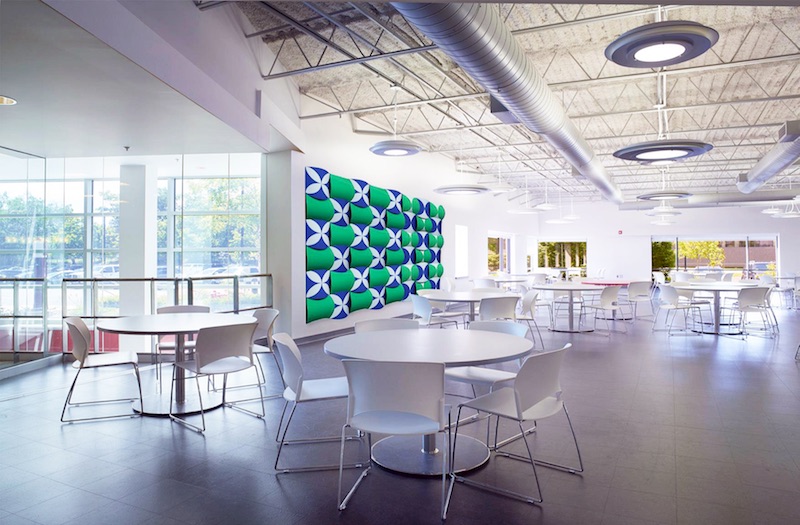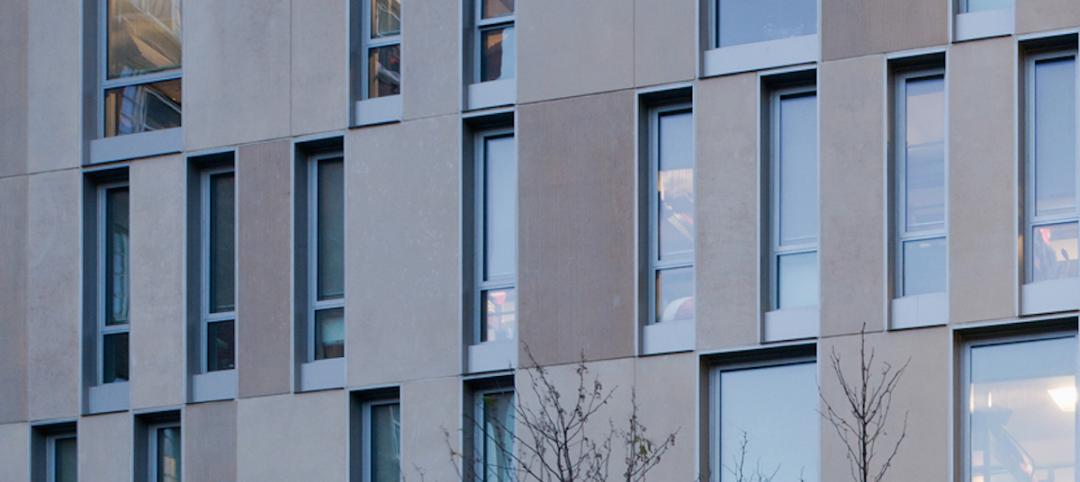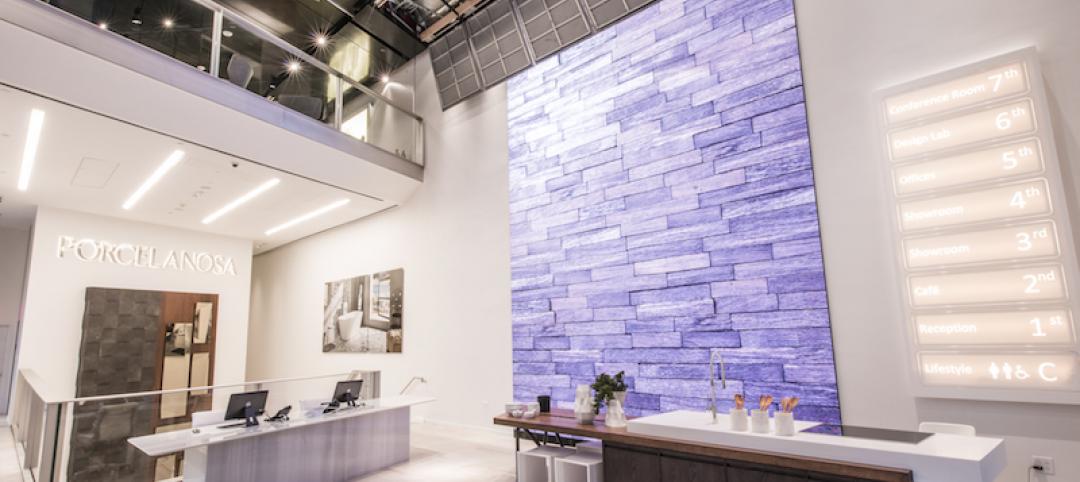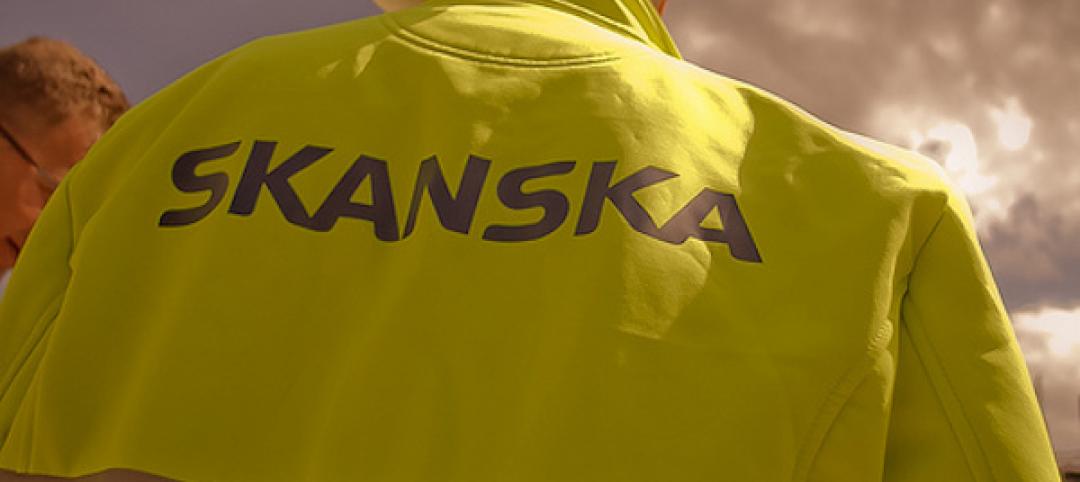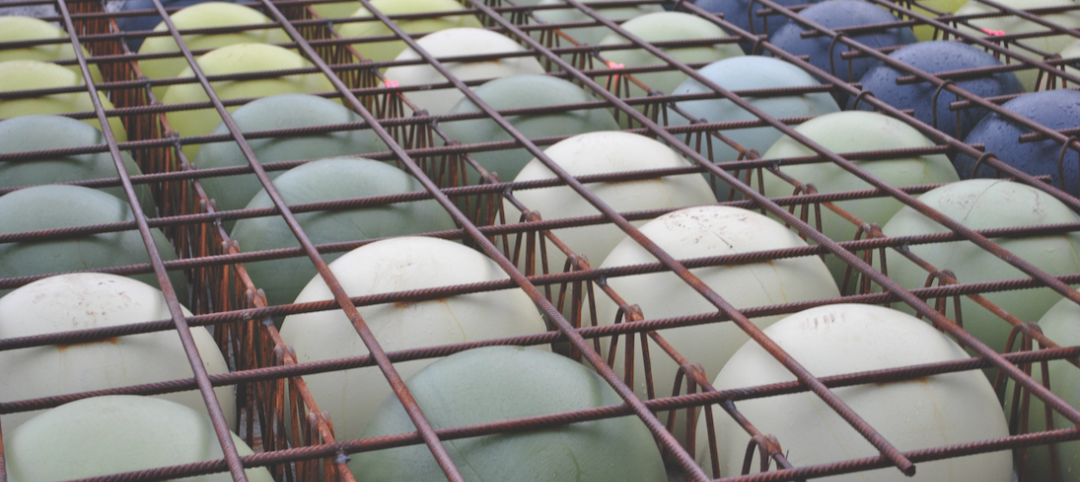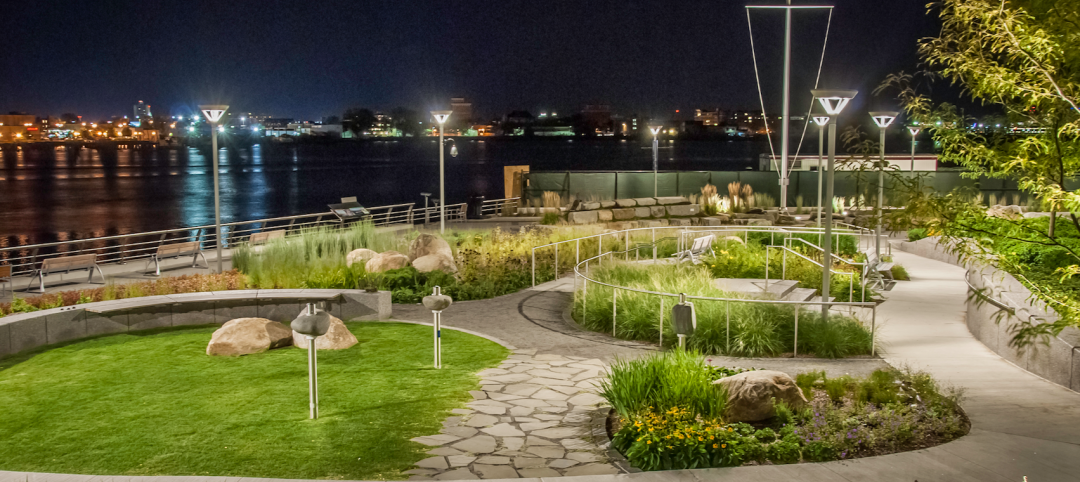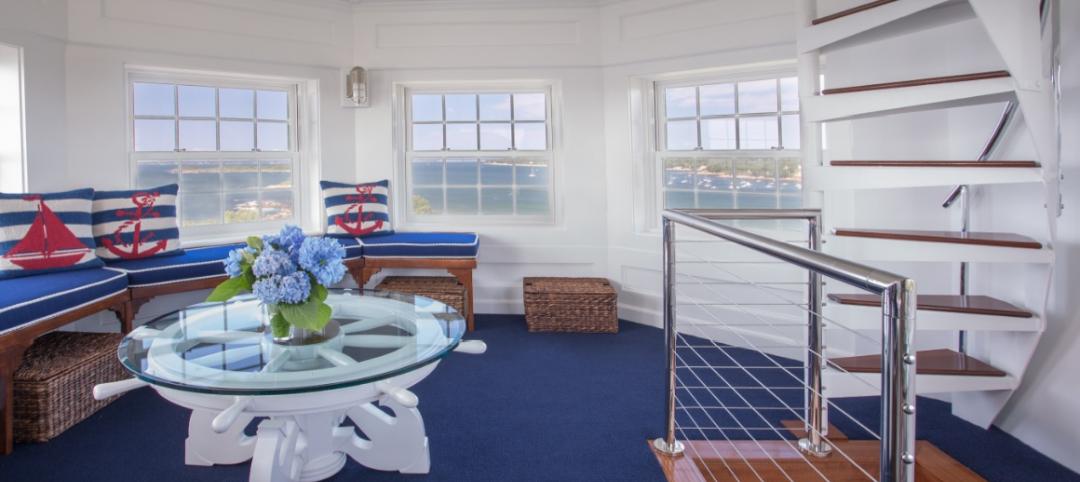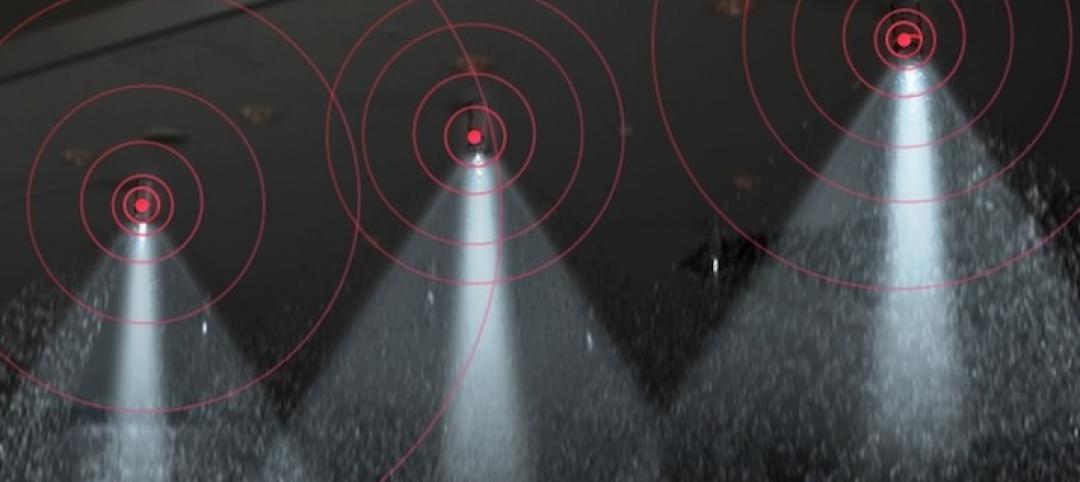When it comes to the building of the future, every material used in construction needs to pull its weight. For a building to become as sustainable, environmentally friendly, and as comfortable as possible, there can be no slackers on the materials front.
Take the newest offering from E Ink. Using the same E Ink bi-stable ink technology found in its current line of eReaders and wearables and integrating it with traditional architectural materials, E Ink Prism creates a new way for commercial spaces such as large hotel lobbies, office complexes, and airports to change the aesthetics of the space without resorting to a large LCD or LED screen—and the light pollution and higher energy demands that come with it.
E Ink Prism has a paint-like appearance and a wide-ranging compatibility with various materials and shapes that make it highly suitable for architectural applications. E Ink Prism comes in seven different colors—Voyage (dark blue), Daydream (cyan), Blush (red), Sprout (green), Zest (yellow), Harvest (brown) and Waltz (black)—and can be sized to be compatible with most configurations, patterns, and materials.
The film can be programmed to dynamically switch colors in nearly any pattern, shape, speed, and sequence. During these visual changes, E Ink Prism only requires ultra-low power and never requires the use of electrical outlets. The film does not provide any illumination and, as with paint, its visibility is based on ambient light.
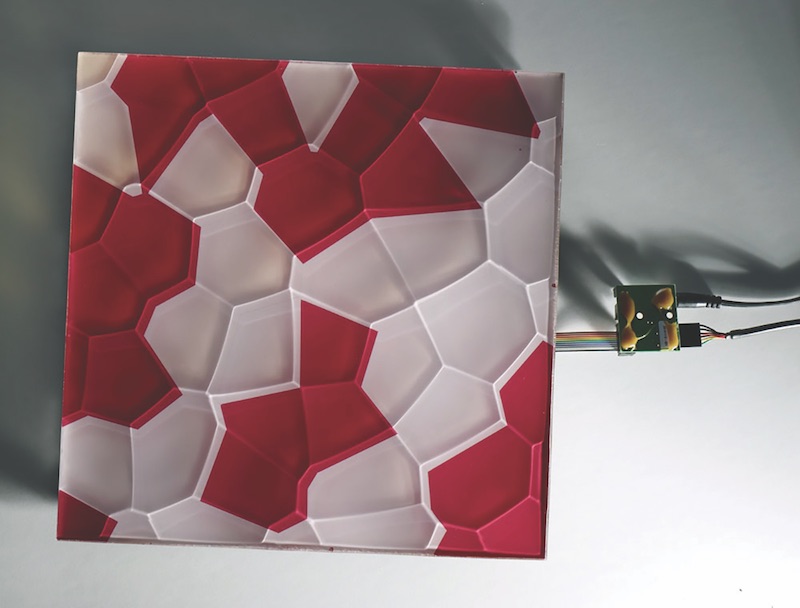 Courtesy of E Ink.
Courtesy of E Ink.
Recent developments are beginning to point to a much more utilitarian future for paint. Researchers at RMIT University, Melbourne, have developed a paint that can absorb water vapor and use solar energy to split it and generate hydrogen. Hydrogen, which is often referred to as the cleanest source of energy, can be used in fuel cells or in conventional combustion engines as an alternative to fossil fuels.
The paint contains synthetic molybdenum sulfide, a new material that acts as a semiconductor and catalyses the splitting of water atoms into hydrogen and oxygen, according to RMIT. All that is needed for the paint to produce fuel is solar energy and moist air.
Applied to a brick wall of a building, the paint instantly converts the wall into an energy-harvesting, fuel-production space. Areas with humid climates provide ideal applications for the paint. But its developers say the material can also be used in applications in very dry, hot climates near oceans. As the seawater is evaporated, the paint will absorb the vapor and produce fuel.
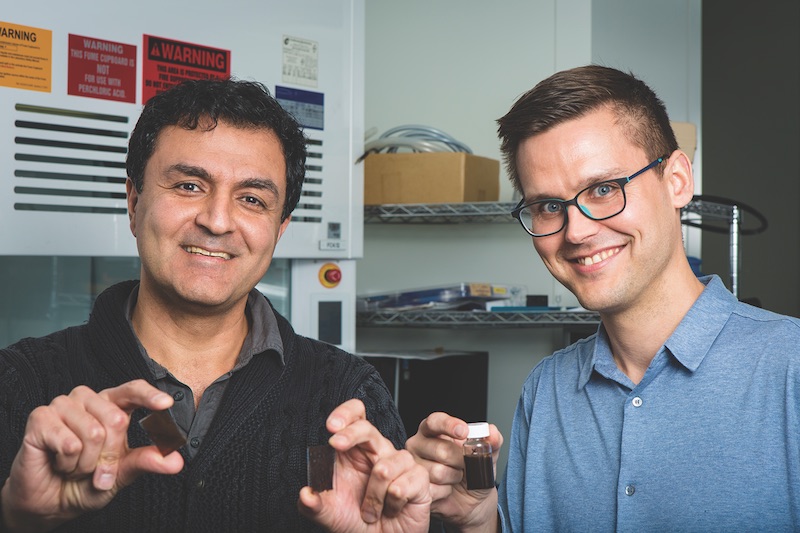 Courtesy of RMIT University.
Courtesy of RMIT University.
Related Stories
Great Solutions | Aug 23, 2016
11 great solutions for the commercial construction market
A roll-up emergency department, next-gen telemedicine center, and biophilic cooling pods are among the AEC industry’s clever ideas and novel innovations for 2016.
Great Solutions | Jan 20, 2016
13 great solutions for commercial construction
As these 13 innovations for the AEC marketplace demonstrate, sometimes a problem can be a good thing.
Great Solutions | Jan 20, 2016
Digitally fabricated concrete formwork pushes the limits of what can be cost-effectively constructed in concrete
Simpson Gumpertz & Heger and CW Keller use 3D modeling and CNC machining to advance concrete construction.
Great Solutions | Jan 20, 2016
Sasaki Associates develops simple yet novel solution for precast concrete complication
Its double-angle cladding anchor maintains the air/water/vapor barrier integrity and continuous insulation while still allowing for the desired versatility of precast panels.
Great Solutions | Jan 20, 2016
Porcelanosa’s solid-surface product, Krion, used to create an elegant retractable ceiling for NY showroom
Typically used for countertops, vanities, and furniture, Krion was used to make 39 panels covering 1,300 sf of ceiling space above the showroom.
Great Solutions | Jan 20, 2016
Skanska’s new app helps construction teams monitor and meet environmental quality standards while renovating hospitals
App allows users to track noise, differential pressure levels, vibration, and dust
Great Solutions | Jan 19, 2016
Concrete innovation: voided biaxial slab slashes weight, saves concrete
System reduces slab dead load by 30% on medical clinic project
Great Solutions | Jan 19, 2016
Healing garden doubles as therapy trails
A Boston-area hospital takes the healing garden to the next level.
Great Solutions | Jan 14, 2016
WWII watchtower turned into ‘land yacht’
Architect Siemasko + Verbridge and contractor Windover Construction transformed a coastal wartime observation post into an amenity-filled guesthouse.
Great Solutions | Jan 12, 2016
Sprinkler system does double duty
Two innovations tap into the multi-use potential for fire/life safety infrastructure.


